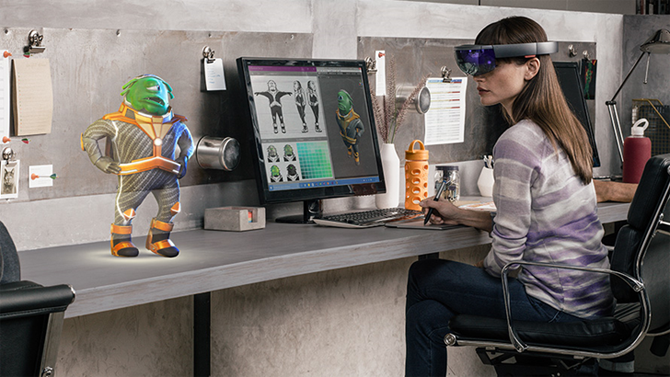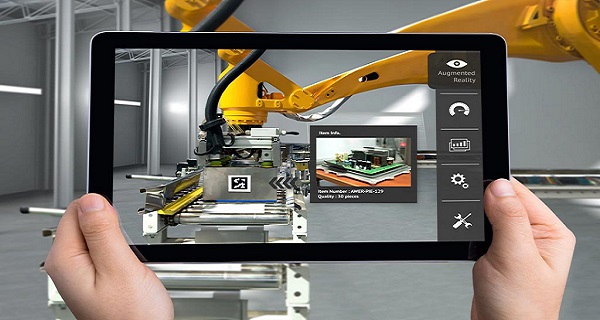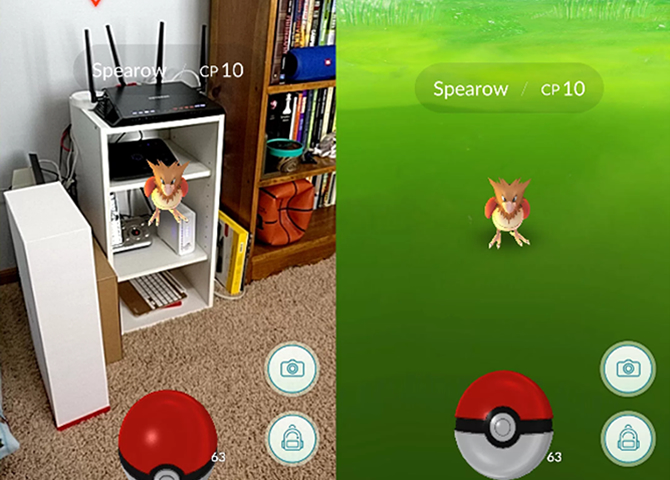Augmented Reality vs Mixed Reality vs Virtual Reality : What’s The Difference?
Audio : Listen to This Blog.
Understanding the difference between augmented, virtual and mixed reality
One fine day, not very long from now, this is how you would be using Facebook: https://www.facebook.com/FacebookTips/videos/10155260579068466/
Now how cool is that? This is what happens when tech giants start tapping the full potential of artificial realities like VR. Now that everyone around is talking so much about VR, AR, and MR, it would be great to start with understanding the basic differences between each of these.
Starting with VR:
As a pioneer in giving us a slice of a virtual world, this is one technology that was pretty simple to implement. You put on a VR headset and you are instantly shifted to a virtual world meticulously crafted for the users. This is the closest to the virtual and farthest from the real world. Putting on a VR headset blocks the real world altogether and gives an immersive experience. VR is what you experience when you put on a VR headset teamed with a VR app or game on your smartphone.
<h6″>Getting a little close to the real world with AR:
Though some got excited with the fact that the virtual world offered by VR can be truly engaging, some were not satisfied with the fact that it cuts off the real world. Broadening that thin line between the real and virtual worlds, comes augmented reality. Pokemon Go contributed to the widespread acceptance of Augmented Reality by the consumer market. Apple has also now shifted its focus to AR. One of NASA’s technology specialist has now joined Apple’s team working on AR. AR is the next level of virtual experience that superimposes the virtual world over the real world. You view virtual Pokemon in your real world through your digital device (read: smartphone).
Mixed reality- a more practical approach giving you the best of both the worlds:
This is a truly hybrid version which is currently gaining momentum thanks to the numerous benefits it delivers to users and businesses alike. MR takes the virtual elements, places them on top of the real world and recreates a mixed reality space that is the perfect equilibrium between real and virtual environments. It is different from augmented reality in the fact that it overlaps augmented reality and an augmented virtual experience. This way, it makes it easier to escape real world without actually being totally cut off from the surroundings.
Grasping the fine line between each of these realities:

Now that was confusing! Aren’t they all so similar yet so different? This is what makes understanding the difference between these realities difficult at times. Few quick pointers to make things more lucid:
For VR, a headset is indispensable. It is the core that takes the user to the virtual world. With AR and MR however, a digital device would be used as a mediator, like the smartphone in the case of AR. Holograms might be superimposed on real environment to create the virtual user interface and headsets might also be part of it but not always.
The environment you move to in VR would be a truly digital one. Whereas with MR as well as AR, the environment combines real and virtual elements in the right proportions. MR gives you more virtual elements on top of the real world making it easier to perceive and draw the line between the realities. Thus, what you see in VR is simply computer generated media content. With MR/AR however, it is a mix of both: computer generated media and real world making it easily acceptable.
The difference in perspective is what sets these technologies apart. VR is more immersive and MR is more interactive. So which is the best technology? This is something that cannot be easily answered. The key lies in using the technology that would be apt for your business. If you are the gaming industry, then, for now, VR would be a better choice as it can provide hours of distraction free gaming experience. But if you are looking to make the workplace in your enterprise better, then MR might be a better choice.
In the case of MR, there is the real-time interaction between the real and virtual elements and the reproduction of the results of the interaction without any lag. The debate now is not about the superiority of one technology over the other. It is mainly about the evolution of the associated hardware and software to support these technologies.
VR, initially was a challenge mainly, the creation of the virtual elements. But eventually that became easy. Among all the buzz, with HoloLens now comes another new concept of holographic computing. Keeping everything aside, for now, AR seems to be a more widely acceptable concept. MR, though it has a bright scope, would take some time to truly materialize on a large scale.
While businesses are busy mining deep in these virtual worlds and realities, it is time to take inspiration from the industries that have already started implementing each of them. The healthcare industry is now using AR in the form of augmented reality microscopes. There are companies using HoloLens to speed up the workflow. And there is so much more happening all around. So, while you continue to debate over the topic of which reality to use in your business, check out the MR headset which would soon be released by Lenovo. And not to forget the rumored AR glasses by Apple.
Getting back to the topic, the core technology would remain similar. The difference mainly lies simply in the application, immersion, interaction, and the method of delivery of the virtual components.



